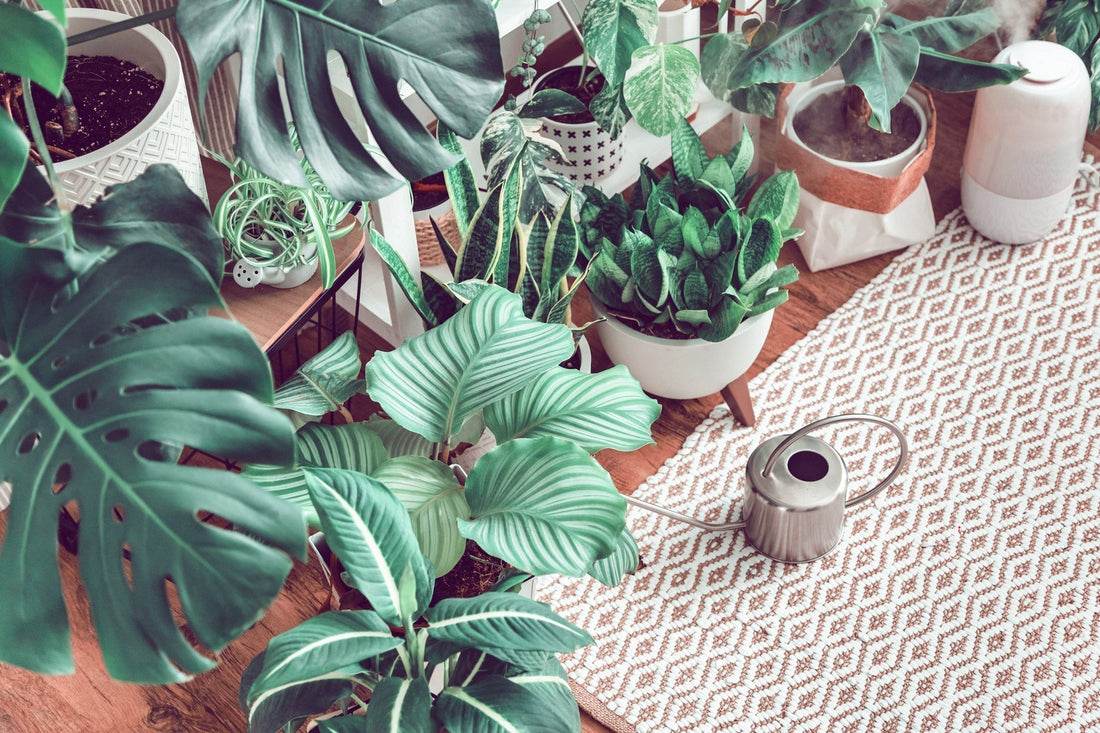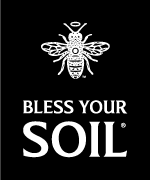
Time to read: 4 minutes
1. Introduction

Fertilizing your potted plants isn’t just an optional extra—it’s the secret sauce that takes them from “surviving” to truly thriving. While fresh potting mix gives seedlings a quick burst of nutrients, most soilless blends lose their punch over time. That’s where houseplant fertilizer (aka indoor plant food) comes in—restoring essential macronutrients, micros, and organic compounds so your green friends look and feel their best.
2. Why Houseplant Fertilizer Matters
-
No nutrients or nutrient depletion in potting mix: Most commercial soils are “charged” out of the bag, then quickly run low on N-P-K (nitrogen, phosphorus, potassium). Further, our favorite type of soil media are sterile mixes which have no nutrient supply—for this reason, fertilizing at nearly every watering is essential.
-
Vibrant foliage: Nitrogen fuels leaf growth and deep green color. A tell-tale sign of poor nutrition in plants is yellowing of the leaves from the veins out, or pale green leaves.
-
Robust growth: Phosphorus promotes root development, and potassium supports overall plant health. When these two macro-nutrients are lacking, you may not see any growth in your plant.
-
Stronger roots & blooms: A balanced feed schedule helps flowering indoor plants produce more blooms and even builds resilience against pests and stress.

3. Decoding the Fertilizer Label

-
Reading N–P–K: The three numbers (e.g., 12-4-8) are percentages by weight of nitrogen (leaf growth), phosphorus (roots & blooms), and potassium (overall vigor and resilience).
-
Targeted ratios: A slightly higher nitrogen ratio, ideally 3-1-2 NPK, is ideal for most foliage houseplants. Higher middle numbers suit bloomers.
-
Micronutrients & organic compounds: Iron, manganese, zinc, boron and botanical extracts (sea kelp, yucca) further help with chlorophyll production, stress tolerance, and soil health. Micronutrients are very important for plants beyond the big NPK.
4. Types of Fertilizers for Indoor Plants
-
Water-soluble concentrates
- Mix into each watering; quick uptake but requires monthly to bi-weekly feedings.
-
Slow-release granules & spikes
- Coated beads or spikes that release nutrients gradually over 3–6 months; a low-maintenance option, but not ideal.
-
Organic vs. synthetic
- Organic feeds (compost teas, bat guano, kelp) can improve soil biology and gently deliver trace elements, while synthetic formulas often give precise and reliable macronutrient ratios. (Read: Organic fertilizers vs synthetic: Myths, truths, and the best of both worlds)
5. How Often & How Much to Feed Your Indoor Plants
-
Growing season (spring–summer):
- Water-soluble: each time you water
- Slow-release: once per potting cycle
-
Dormant season (fall–winter):
- Reduce to once every 4–8 weeks or pause altogether for some species.
-
Avoid overfertilization:
- Signs include brown leaf tips, crusty soil, and wilting. This can happen if the soil your plant is in still has slow release nutrients or just a bad quality fertilizer. Hard water is another cause for this. Always start at half-strength and adjust up if plants respond well, and use filtered water for your sensitive plants like calathea and orchid.
Read: Top 5 care tips for indoor plants
6. Choosing the Right Indoor Plant Food
-
Match to plant type:
- Foliage champions (e.g., pothos, philodendron, monstera, ficus): a 3-1-2 NPK, like Big Green Leaves® , will keep leaves popping on the regular.
- Flowering beauties (e.g., African violets, ferns, orchids): higher phosphorus or a balanced blend like Grow Goodies® 16-16-16 NPK.
-
Light & pot size:
- Bright light = faster growth = more frequent feeding.
- Small pots deplete nutrients more quickly than larger containers.
-
DIY teas vs. commercial blends:
- Homemade compost teas can boost microbes but vary in strength and attract pests indoors.
- Quality commercial powders ensure consistent nutrient ratios every time.
7. Why Big Green Leaves® Wins as the Best Houseplant Fertilizer
- Perfect 12-4-8 NPK: Tailored for lush foliage and steady root support.
- Comprehensive micros & organics: Infused with sea kelp, and chelated trace minerals for deeper green, stronger stems, and improved soil biology.
- Urea-free, odorless powder: No nasty smells, no clogging, just instant-dissolve convenience.
- Won't attract pests: Unlike plant foods that rely on decomposing materials, Big Green Leaves® supports soil biology without attracting pests.
- Versatile application: Ideal for soil drench, foliar spray, or hydro setups—one scoop does it all.
- Premium ingredients, proven results: “Want more green for your green? Just one tiny scoop packs more leaf-growing power than a bottle of liquid.”
8. Step-by-Step: Fertilizing with Big Green Leaves®
- Measure & mix: 1–2 level teaspoons per gallon of room-temperature water.
- Apply: Water your plant as usual, ensuring even distribution to the root zone. For best results, continue adding water until you see water flushing through the bottom of the pot.
- Foliar option: For a quick boost, spray lightly onto leaves (avoid runoff).
- Monitor & adjust: Watch new growth over 2–4 weeks—if leaves look extra vibrant, maintain dosage; if tips brown, dilute further.
9. FAQs: Houseplant Fertilizer & Indoor Plant Food
Q: Can you overfertilize houseplants?
A: Yes, especially during months where sunlight is less available. Also keep in mind that some plants are heavier feeders than others. Start with less and observe your plant for reaction, and, always adapt your fertilizing regimen with the season.
Q: Is fertilizer necessary in winter?
A: Most houseplants slow down and can't use the nutrients you're providing when the light hours are reduced, so reduce your feeding schedule to half.
Q: What’s the best ratio for flowering vs. foliage plants?
A: For foliage: 3-1-2 NPK (e.g., 12-4-8). Bloomers: boost phosphorus—something like 5-10-5 or even higher middle numbers.
Q. Which houseplants are lighter feeders? How do I know?
A: In general, look at the leaves. Thick, succulent foliage—like you see on snake plants, Hoyas, ZZ plants, and most succulents—means the plant stores water (and nutrients) in its leaves and roots. Those “water-storing” houseplants grow slowly and only need a light touch of fertilizer.
10. Conclusion & Next Steps
Armed with this guide, you’re ready to choose the perfect indoor plant food and keep your potted plants looking their best year-round. For a truly hassle-free, nutrient-packed experience, give Big Green Leaves® a try—your plants will thank you with darker, fuller foliage and stronger roots.
Ready to feed smarter?
- Explore our detailed watering guide next: How Often to Water Houseplants
- Shop Big Green Leaves™ here: Big Green Leaves® Fertilizer
Don’t take our word for it—let your plants tell you.





